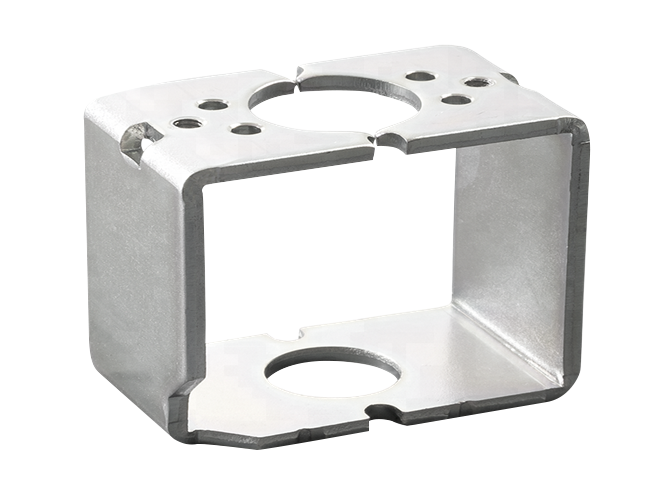Sheet metal fabrication: The brief introduction and engineering guide
Ready to get your design into reality?

Resources and guide for sheet metal fabrication
Sheet metal is metal in the form of thin, broad sheets. Sheet metal itself is seldom a finished product. Rather, manufacturers use it to create many different products in a wide range of industries. Some of these include aerospace, automotive, communication, computer, construction, electronics, food processing and storage, military, and pharmaceuticals.1. Products Produced JunYi can use our capabilities to create a wide variety of parts and products. Examples of some of these parts and products include metal furniture (stainless steel storage units, metal cabinets, steel shelving, etc.), stairwell railings, fencing and cages, HVAC industry parts (ductwork, grating, venting, etc.), lighting hoods, scissors, structural elements (stainless steel bridge skeletons, aircraft framework, etc.), and silverware. 2. Materials Two of the most common metal materials used to create precision sheet metal are stainless steel and aluminum. Stainless steel is valued as sheet metal because stainless steel provides strength, durability, corrosion resistance, and easy cleaning. These qualities prove valuable in harsh environments and to the manufacturing, food processing, and storage industries. Aluminum is popular because it offers compressive strength, tensile strength, and lightness. Aluminum sheet metal products have applications in aerospace, automotive manufacturing and other transportation industries, and the packaging, construction, food and beverage, music, household, and electronics industries, among others. Other metals used to create sheet metal include brass, copper, nickel, titanium and, for specialty applications, gold, silver, and platinum. 3. Service Details Sheet Metal Forming Before a piece of sheet metal can be formed into any part or product, we must form the sheet metal itself. To get it to reach its rectangular sheet form, our sheet metal workers heat raw metal is until it is malleable. Then, they lay it out as long, molten slabs. After this, they feed the slabs of precision sheet metal through a set of large, powerful rollers. The rollers compress the metal slabs into large, broad planes, or sheets. Sheet Metal Shipping After our metalworkers create the sheet metal, we cut it to size and send it on to another manufacturing plant. At the next location, the metal sheet undergoes design and fabrication. Part Design Sheet metal design is the process of identifying any and all potential stress points, weak areas, and other potential problems a finished product may face, and formulating and carrying out a comprehensive plan of action to ensure that the product does not fall victim to any of these potential issues. Part Fabrication During this part of fabrication, we need to manipulate the metal sheet so that it can become the product they wish to make. To do so, manufacturers may participate in any number of metalworking processes, including machining, cutting, sawing, shearing, drilling, perforating, stretching, rolling, bending, spinning, ironing, stamping, sanding, deburring, blanking, and welding (spot welding, MIG welding (metal inert gas welding), TIG welding (tungsten inert gas welding), stick welding, etc.). Heat Treatment (Optional) Heat treatment is an optional step, but our metalworkers almost always take the opportunity to perform it. We heat treat metal parts to either harden and strengthen them, or soften them for further working. Some of the most common heat treatment methods include tempering, quenching, and annealing. Assembly (Optional) Finally, if a precision sheet metal product consists of multiple parts, we often assemble them before shipping it out. 4. Design When deciding how to fabricate a custom metal part or parts, we need to consider the specifications like product purpose, required product strength, product quantity request, standard requirements, required material characteristics (corrosion resistance, impact resistance, heat resistance, etc.), and the like.
Sheet metal fabricators can create virtually any piece of custom sheet metal or custom sheet metal products. They can vary custom products by shape, size, complexity, materials, and more. To find out more about custom fabrication, talk to your potential suppliers. Machinery Used We could operate the sheet metal fabrication manually or with the guidance of a computer operated (CNC) machine. We have a wide range of equipment in our sheet metal fabrication shops. Some of the many machines that sheet metal fabricators use, CNC controlled or otherwise, include punch and die machines, automated lines, press brakes, and various tools, such as drills and laser cutters.
Punch and die machines form products from sheet. To use them, manufacturers first secure one or more flat metal sheets on a designated surface. Once the workpiece is in the place, the punch comes down and literally punches the metal sheet. The metal then deforms and takes on whatever shape the punch has. Alternatively, manufacturers can place metal sheets on top of a die, and then use a press brake to press the metal into the die.
Automated lines are assembly lines that use robot workers instead of humans. Automated lines are incredibly efficient, and less likely to yield errors. They are most common in large factories.
Press brakes are machine brakes that metalworkers use to bend sheet metal. Often, metalworkers use press brakes in conjunction with other equipment, like shaped dies or punches.
Drills are cutting tools with rotating tips that manufacturers use to create holes in material.
Laser cutting tools use laser beams to make extremely clean, high quality cuts
If you are looking for a precision sheet metal fabricator and contract manufacturer with high quality and 30%+ cost reductions, contact us today!
